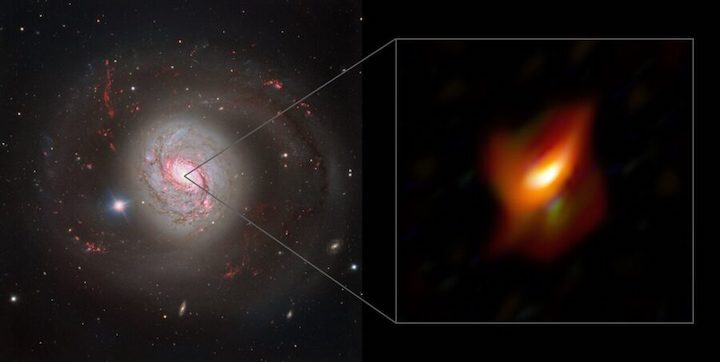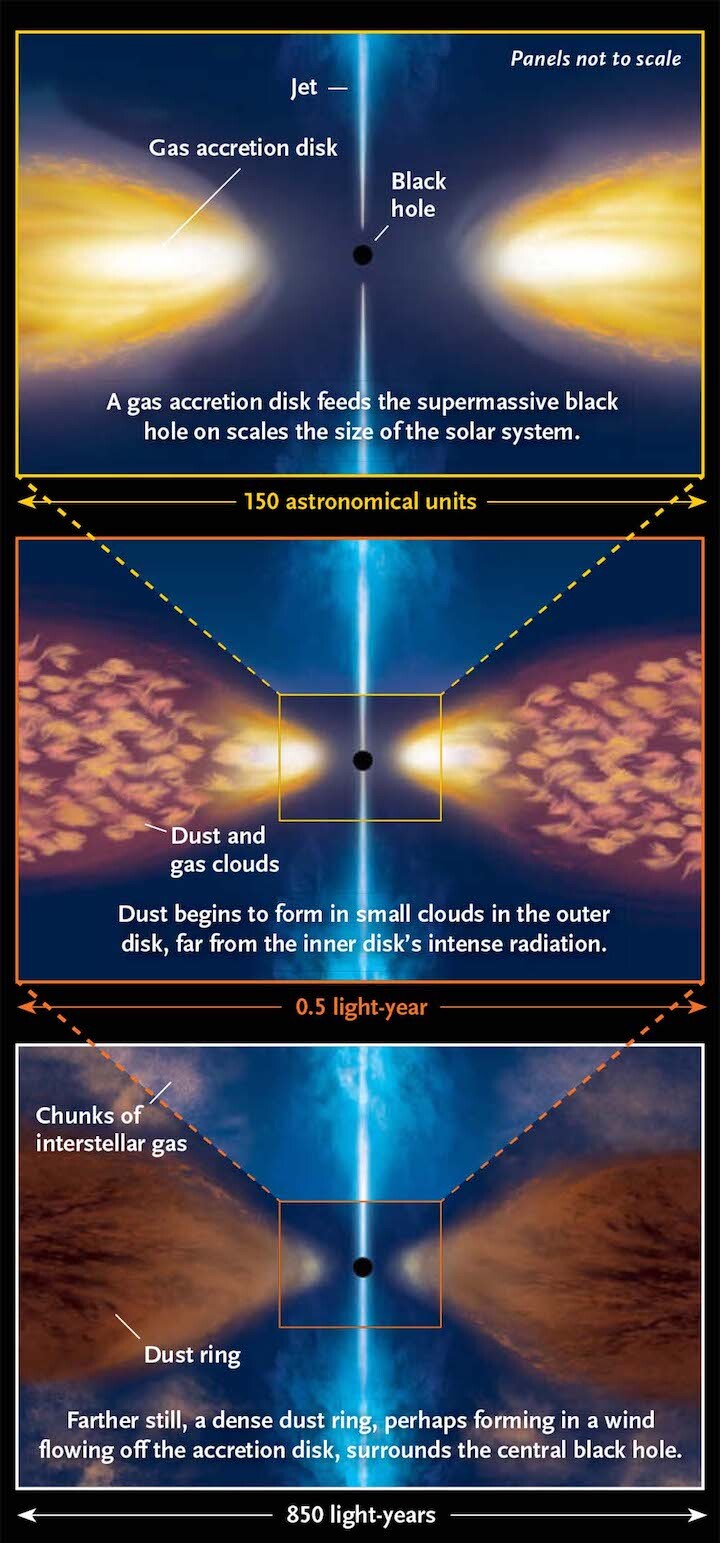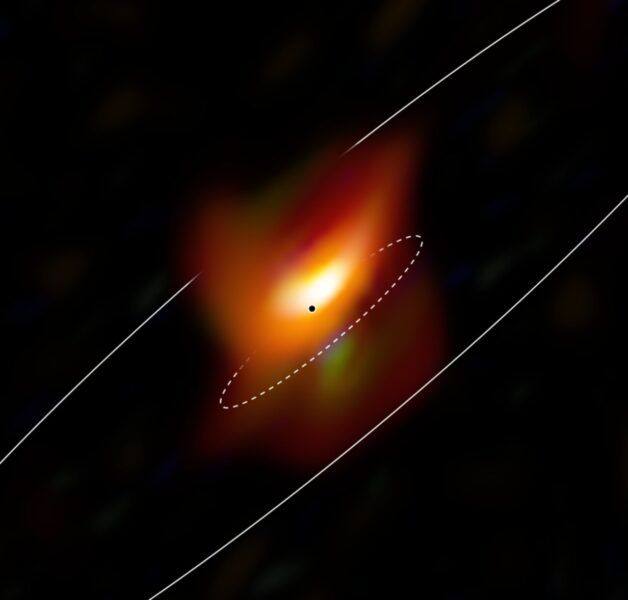18.02.2022
A high-resolution infrared image has revealed a dust screen obscuring a gas-devouring supermassive black hole in the center of the galaxy NGC 1068, confirming 30-year-old predictions.

Galaxy NGC 1068 (left) and the new infrared image of its central region (right), revealing the dust around the supermassive black hole.
ESO / Jaffe / Gámez-Rosas et al.
In the centers of many galaxies lies an active galactic nucleus (AGN), a supermassive black hole screaming for attention. But while some of them exhibit distinctive features from the gas swirling around the maw, others do not. The dichotomy had been puzzling scientists for decades until about 30 years ago when they took a closer look at the center of the barred spiral galaxy NGC 1068.
The galaxy harbors a bright AGN and lies a mere 47 million light-years away, a perfect target for a close inspection. At the time, scientists found indirect — but convincing — evidence that a donut-shape dust feature obscured the central black hole. The surprising discovery led to the unified model, which states that the two types of AGNs are in fact the same phenomenon: We only observe them as distinct because, depending on our line of sight, dust obscures some AGNs but not the others.
Despite the theory's success, technological limitations meant astronomers never observed the dust ring directly. Until now. In a new study published in Nature, scientists present high-resolution observations of the dust screen in the central region of the NGC 1068, thus finally directly confirming the 30-year-old prediction.
"The results presented in this paper are very interesting," says Stefano Bianchi (Roma Tre University, Italy), who was not involved in the study. "They are not surprising and revolutionizing, but they are giving us finer details of what we had before."
THE STANDARD PICTURE
Building the unified picture required resourcefulness and hard work, writes Robert Antonucci (University of California, Santa Barbara) in a perspective piece that accompanied the research. The model that emerged is now generally accepted among scientists.

In the very center of an AGN lurks a supermassive black hole with a mass of millions to billions that of the Sun. Around it swirls an accretion disk that feeds the black hole, producing an enormous amount of energy that can outshine all the stars in the host galaxy. A thick ring of cosmic dust surrounds the complex. Finally, gas clouds extend well above and below the region surrounded by the dust.
The hot accretion disk emits ultraviolet light that heats the surrounding dust, which in turn emits infrared light. Now, astronomers observed the infrared light from the center of the NGC 1068 with MATISSE, an instrument mounted on the Very Large Telescope Interferometer in Chile. It took the combined power of four 8.2-meter telescopes to produce sharp images of the dust ring at infrared wavelengths.
Accurate radio observations of the radio light emitted by the black hole helped to pinpoint the black hole's position behind the dust ring. "Radio images were extremely important," says Violeta Gámez Rosas, a graduate student at Leiden University in The Netherlands, who led the study. "Without that, we would be lost."

ESO / Jaffe, Gámez-Rosas et al.
THE DEVIL'S IN THE DETAILS
This was not the first time that astronomers searched for the dusty ring. "Previous works saw the dust, but they could not resolve the structure," says Gámez Rosas. The new images reveal a very asymmetric dust structure that is nothing like the donut-shaped object proposed initially. Perhaps the observations do not probe the ring's innermost and possibly more symmetric part. Previous evidence has also pointed to a complicated structure.
While the new observation fits very well into the standard interpretation, it remains to be seen how representative the AGN in the NGC 1068 is. It will not come as a surprise that a closer look at individual AGNs reveals a diversity that goes well beyond the simple unified model. Some differences arise because we observe AGNs at different points in their evolution. "It would be extremely interesting if similar observations will be performed on other sources to understand if NGC 1068 is standard or not at all," says Bianchi.
Indeed, the team has already observed several other AGNs, and some of the results will soon be published. But apart from Circinus Galaxy, the second-nearest AGN that hides behind the Milky Way's plane, all of these sources are more distant, making dust in their centers more challenging to resolve.
Quelle: Sky&Telescope
